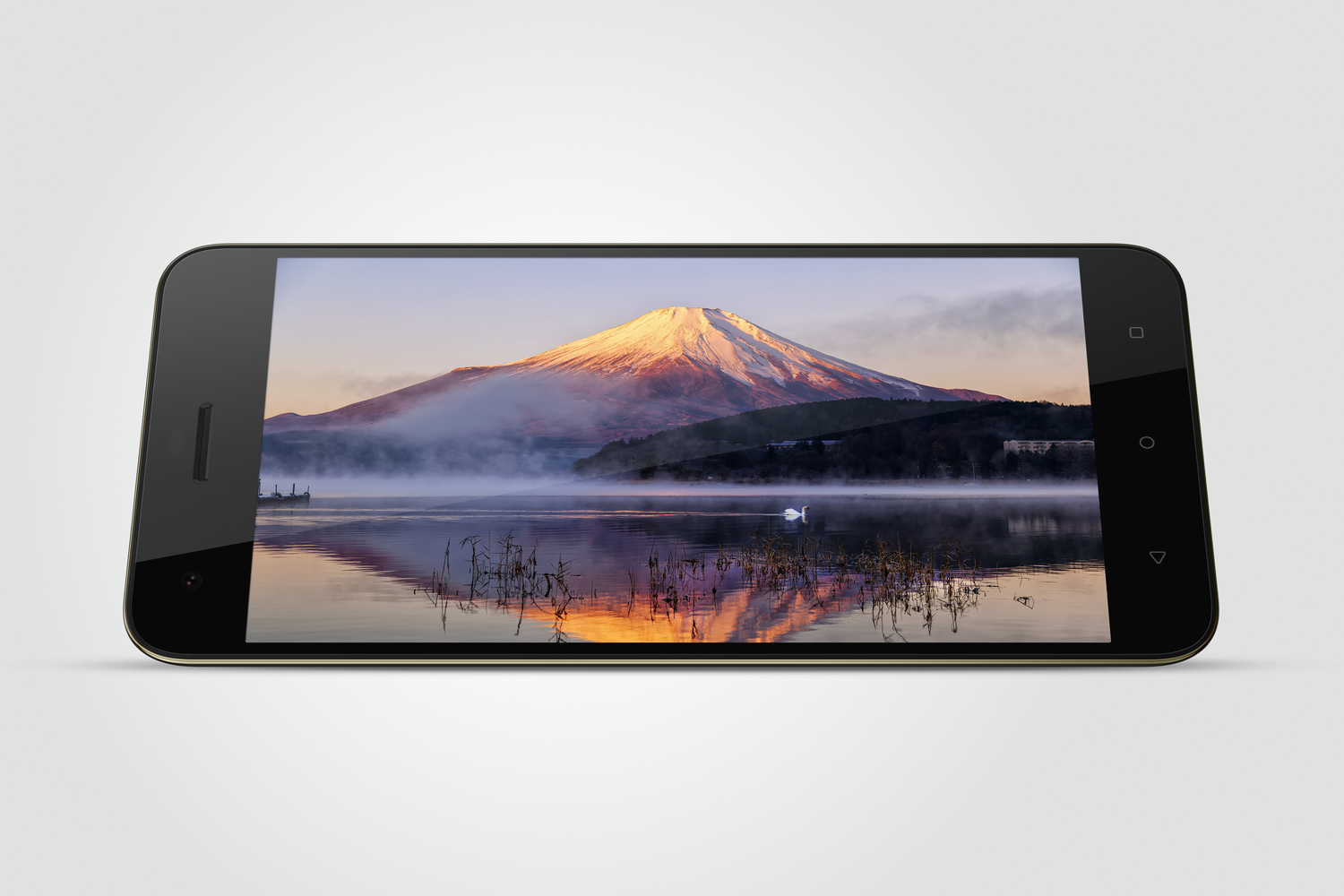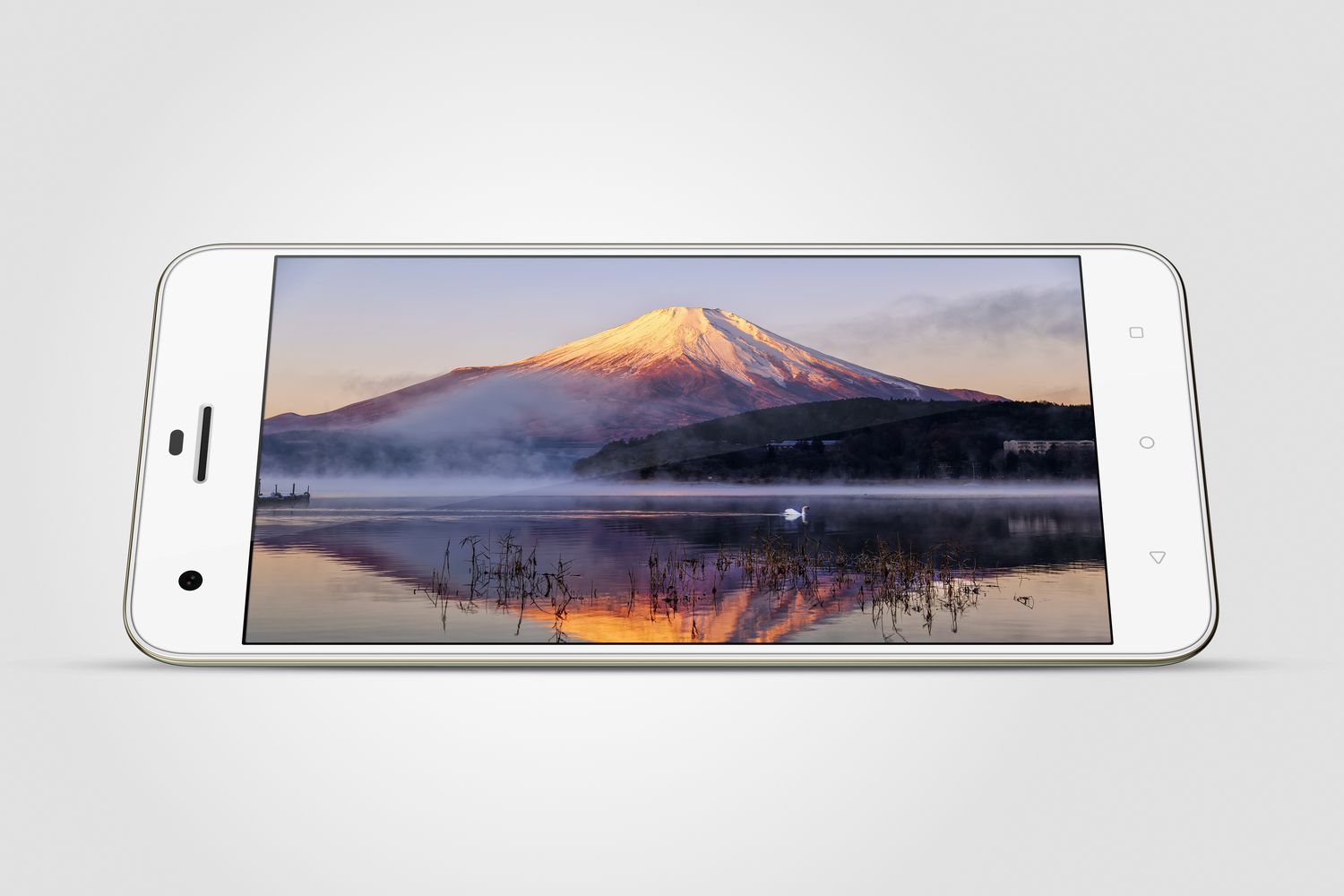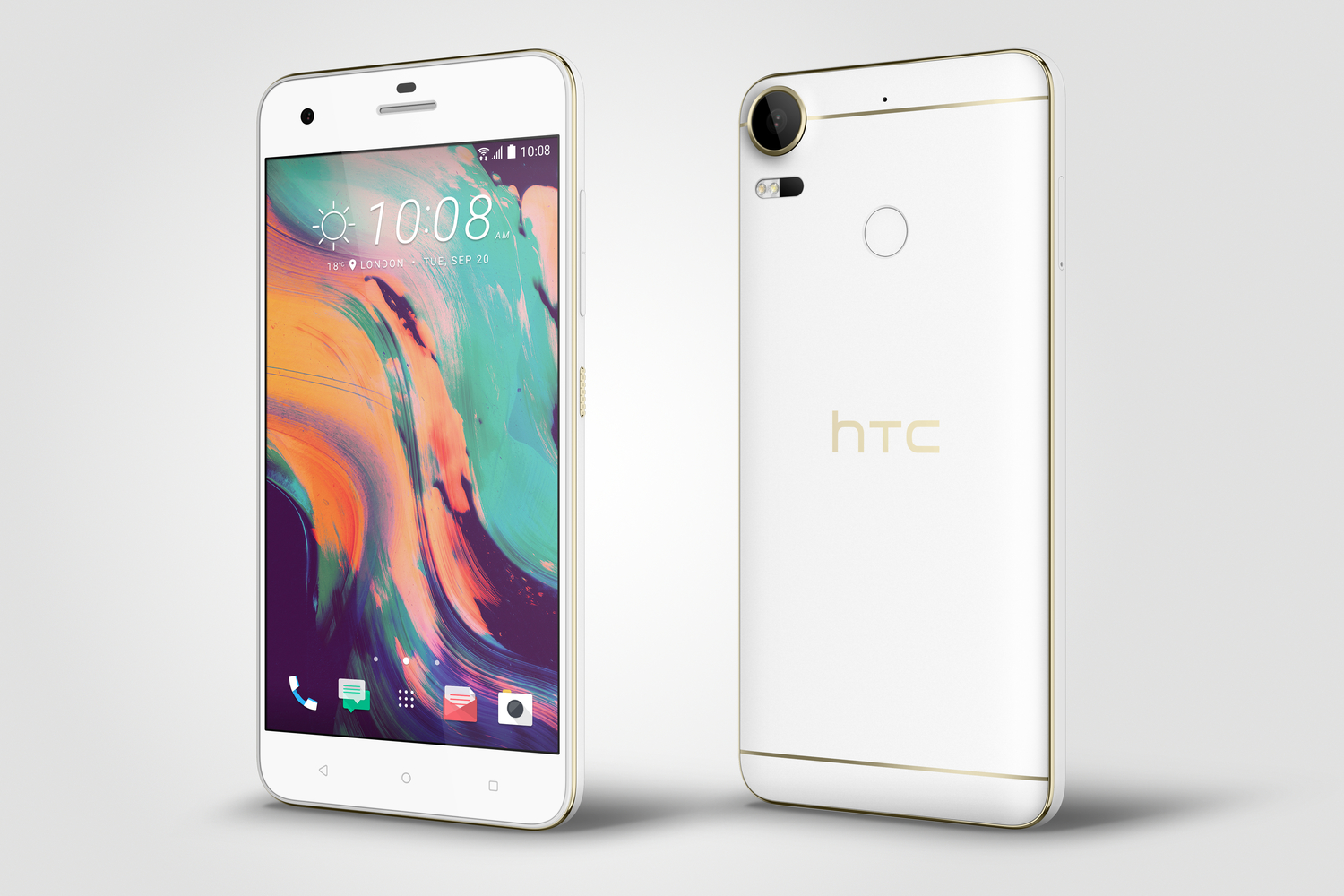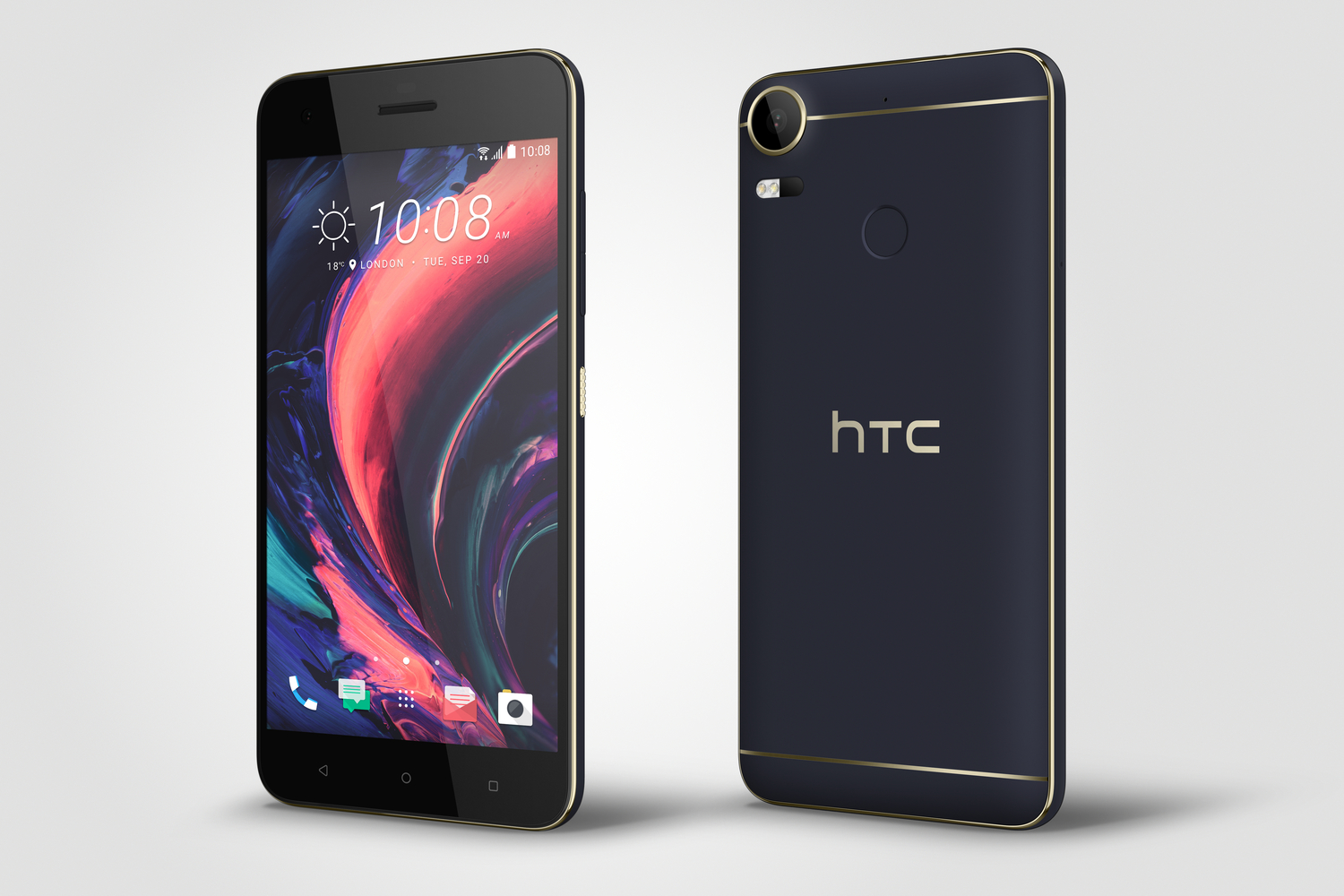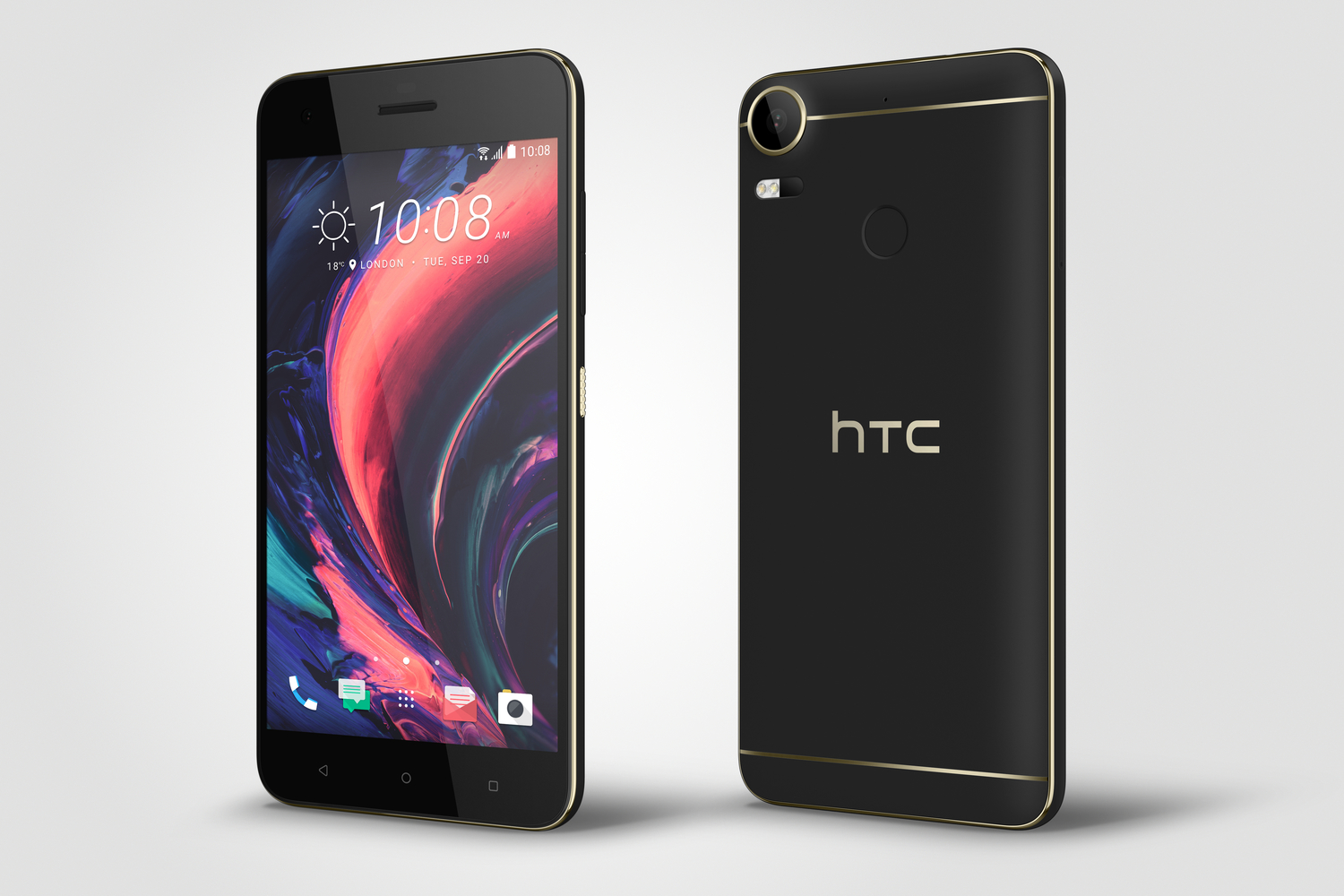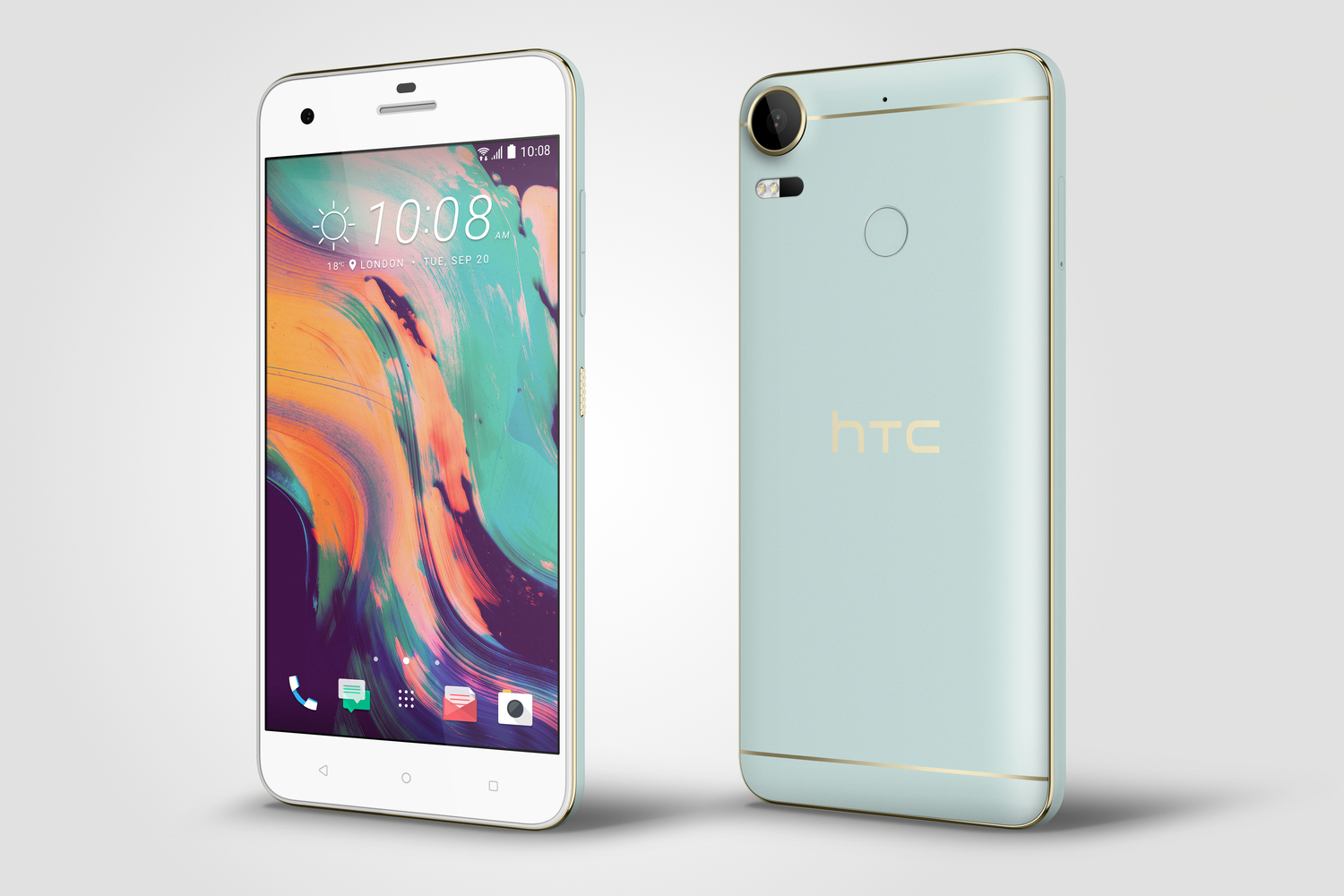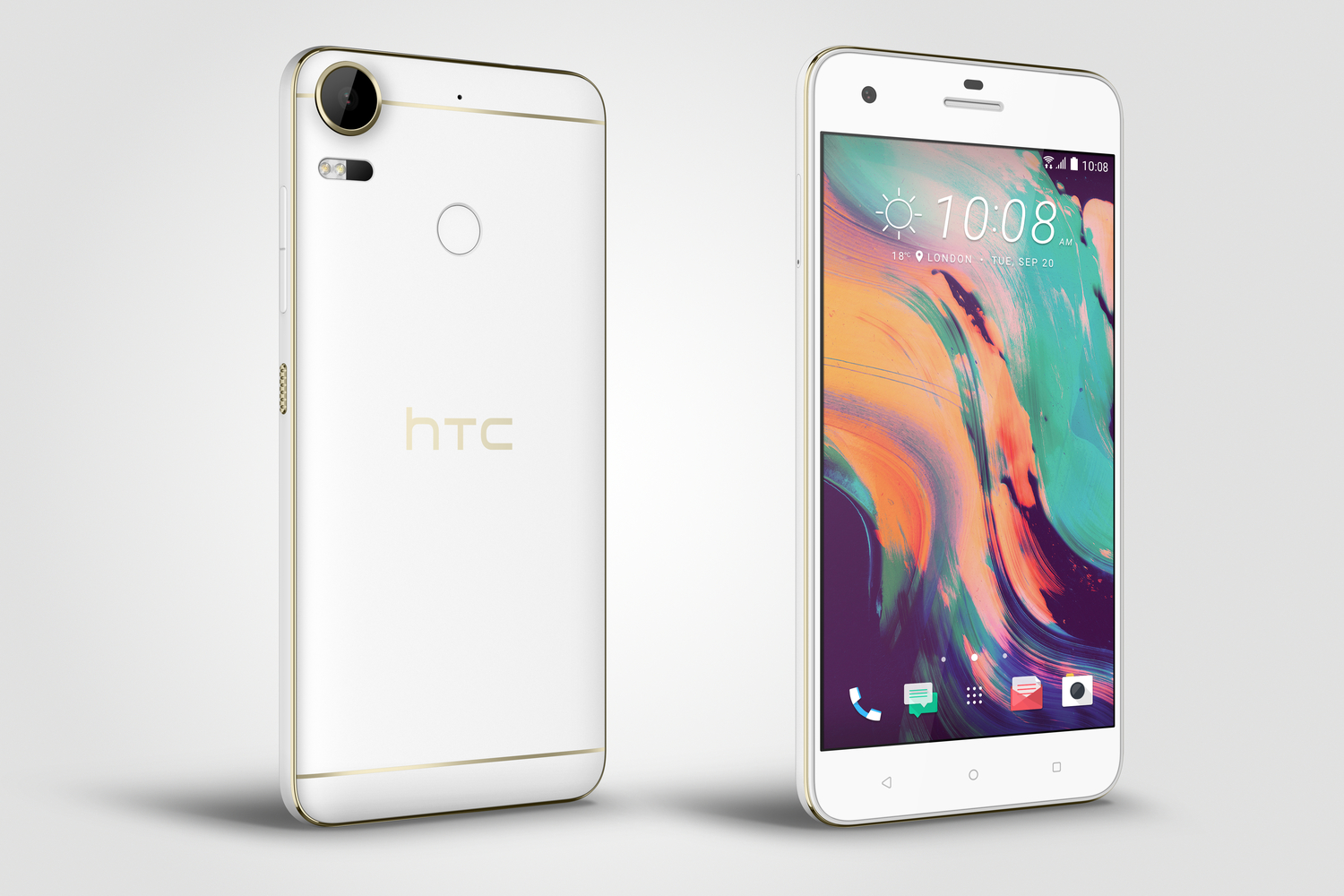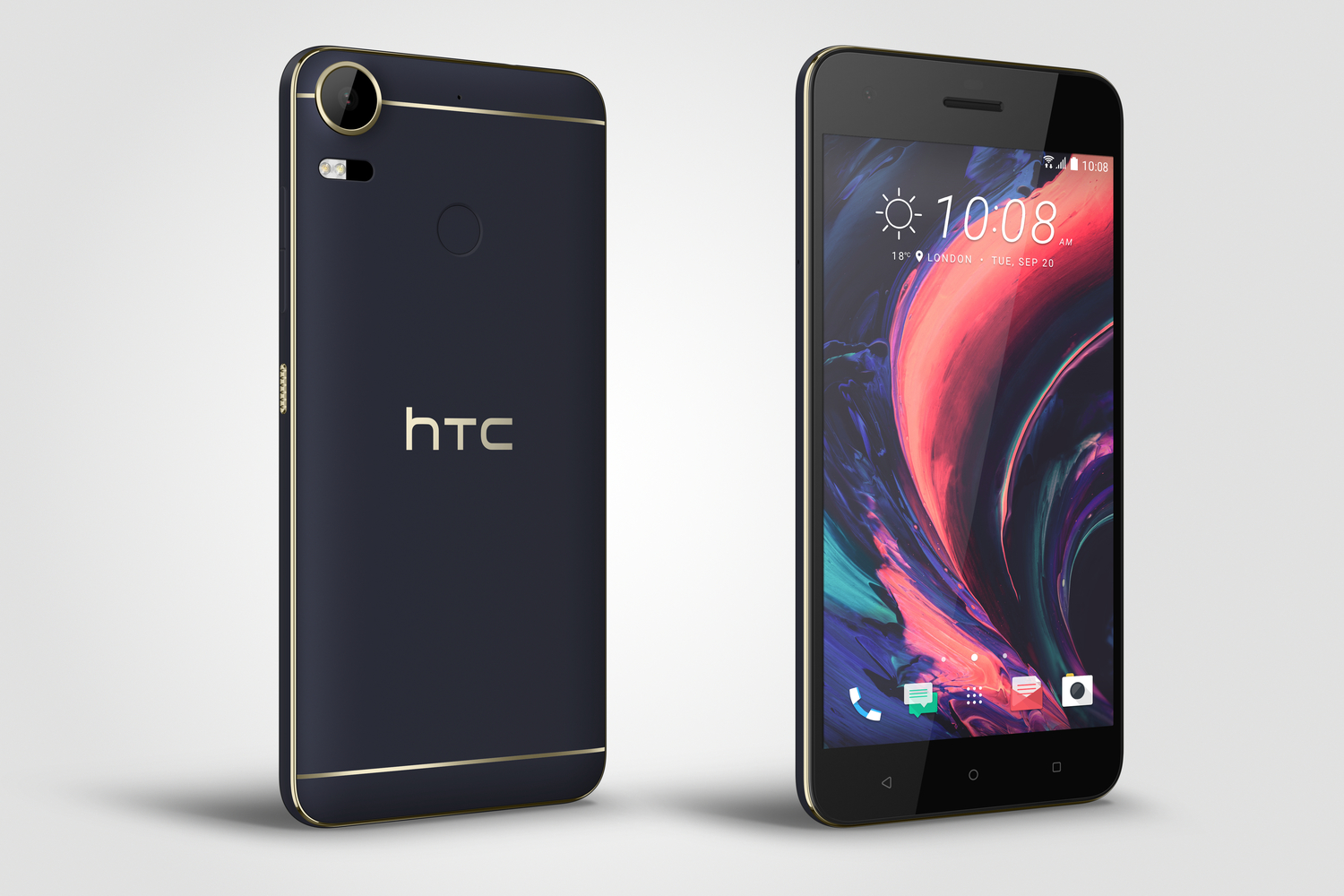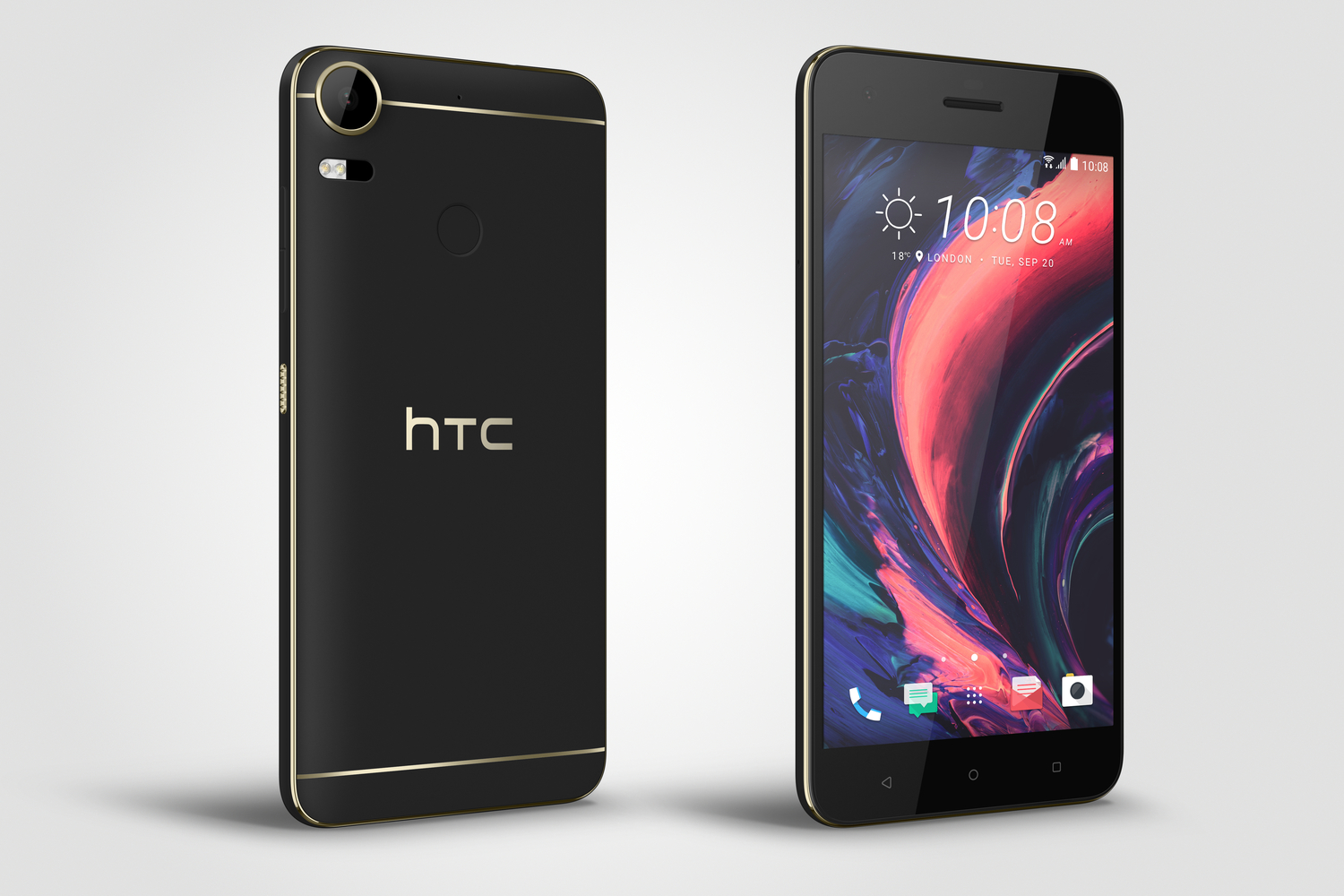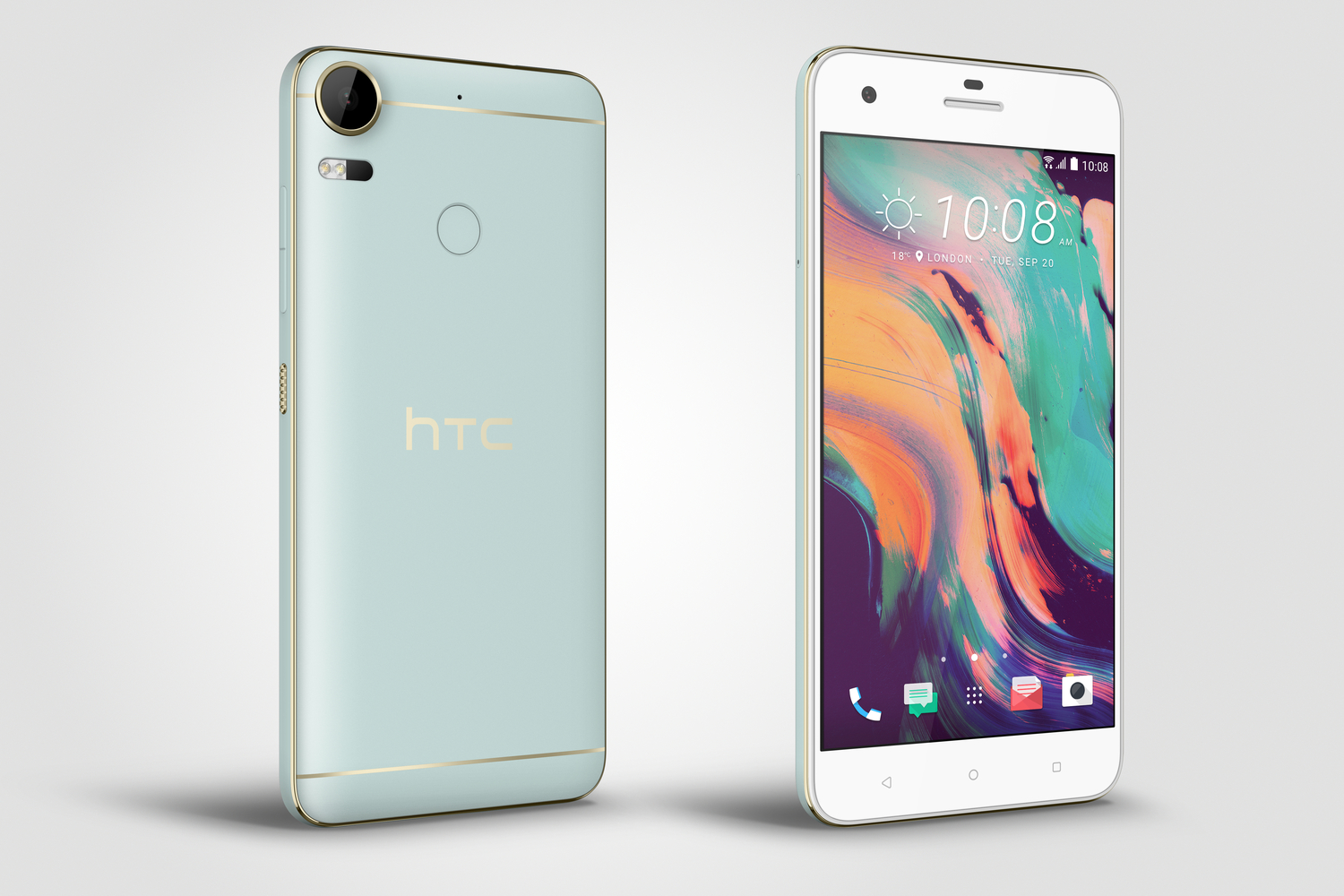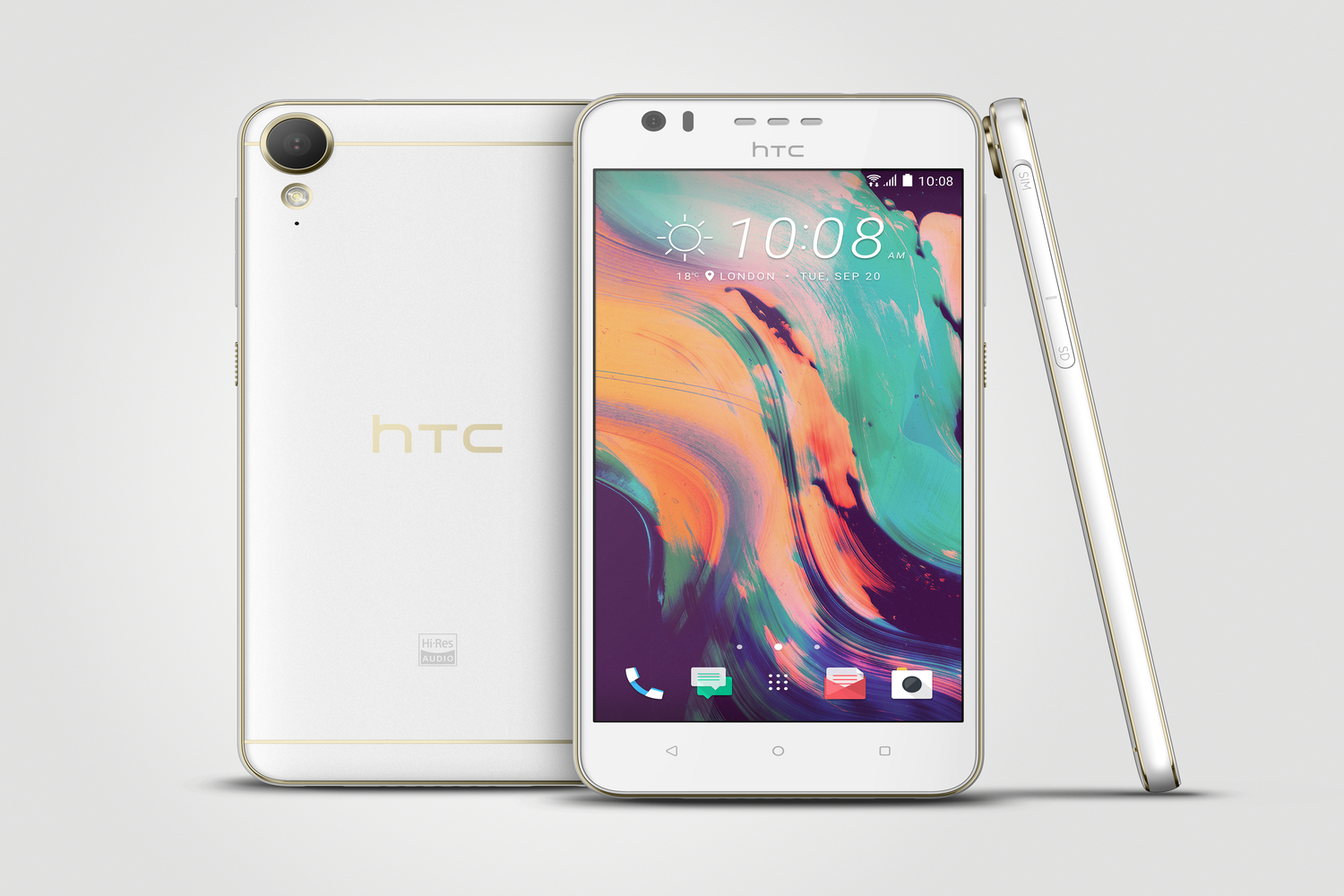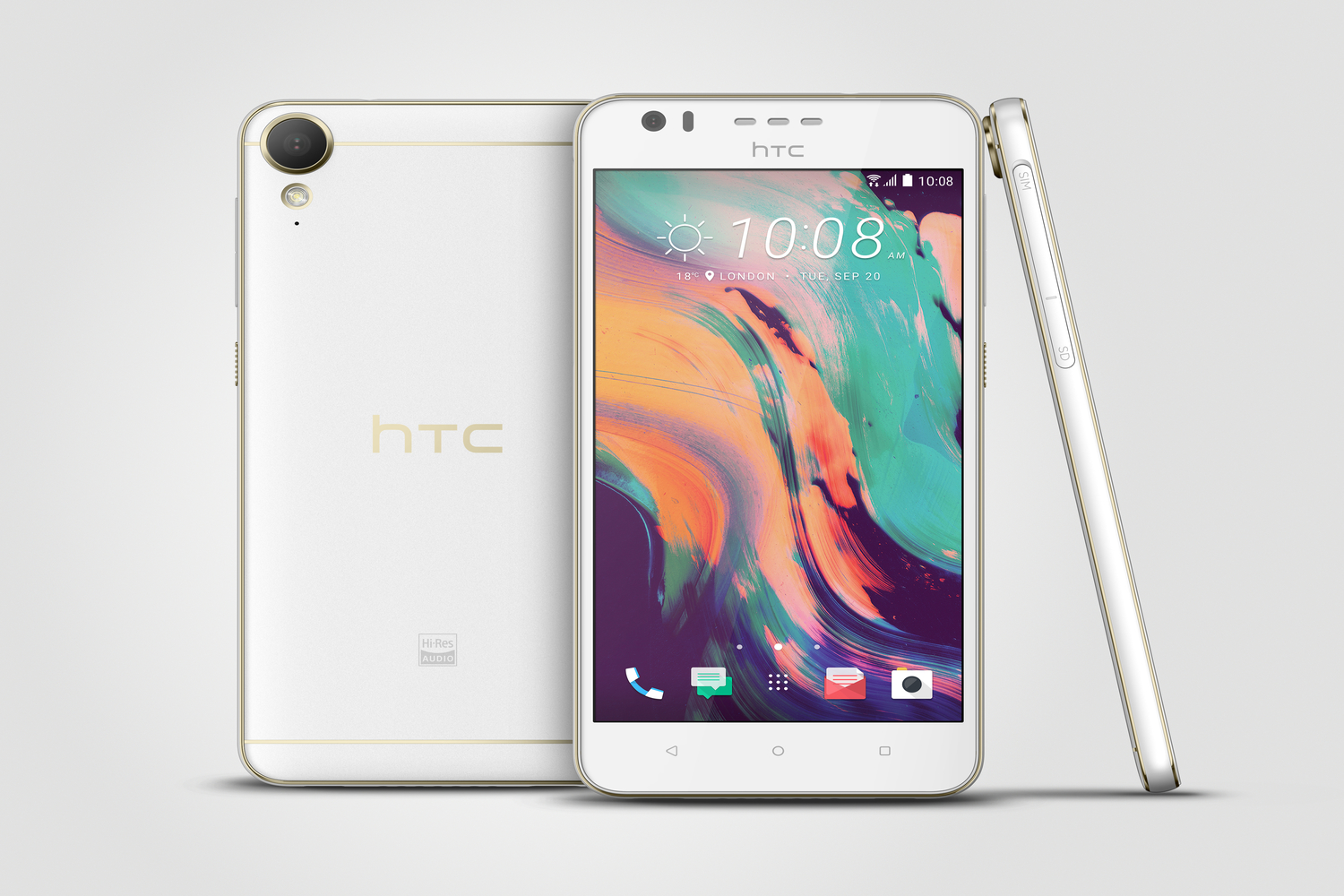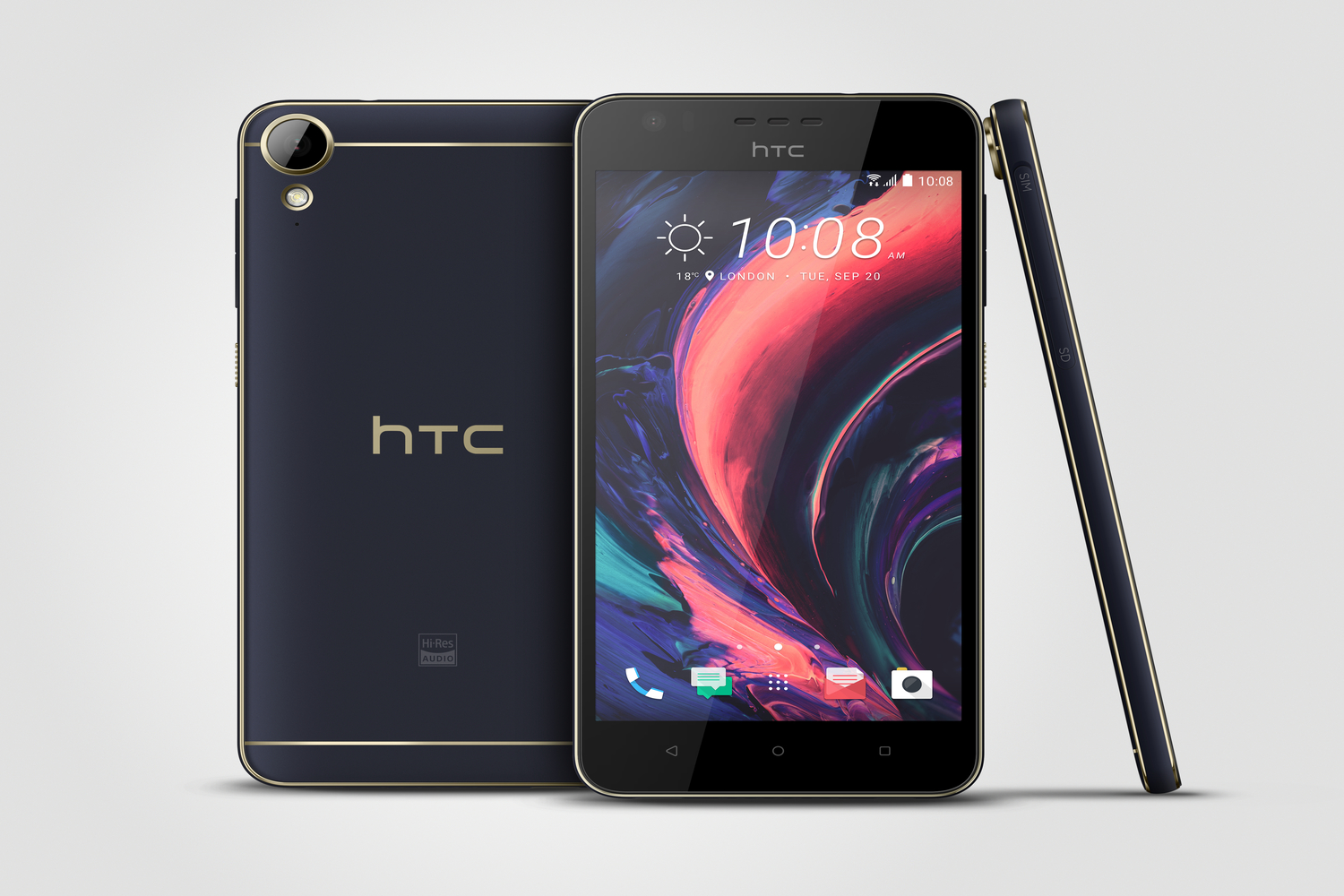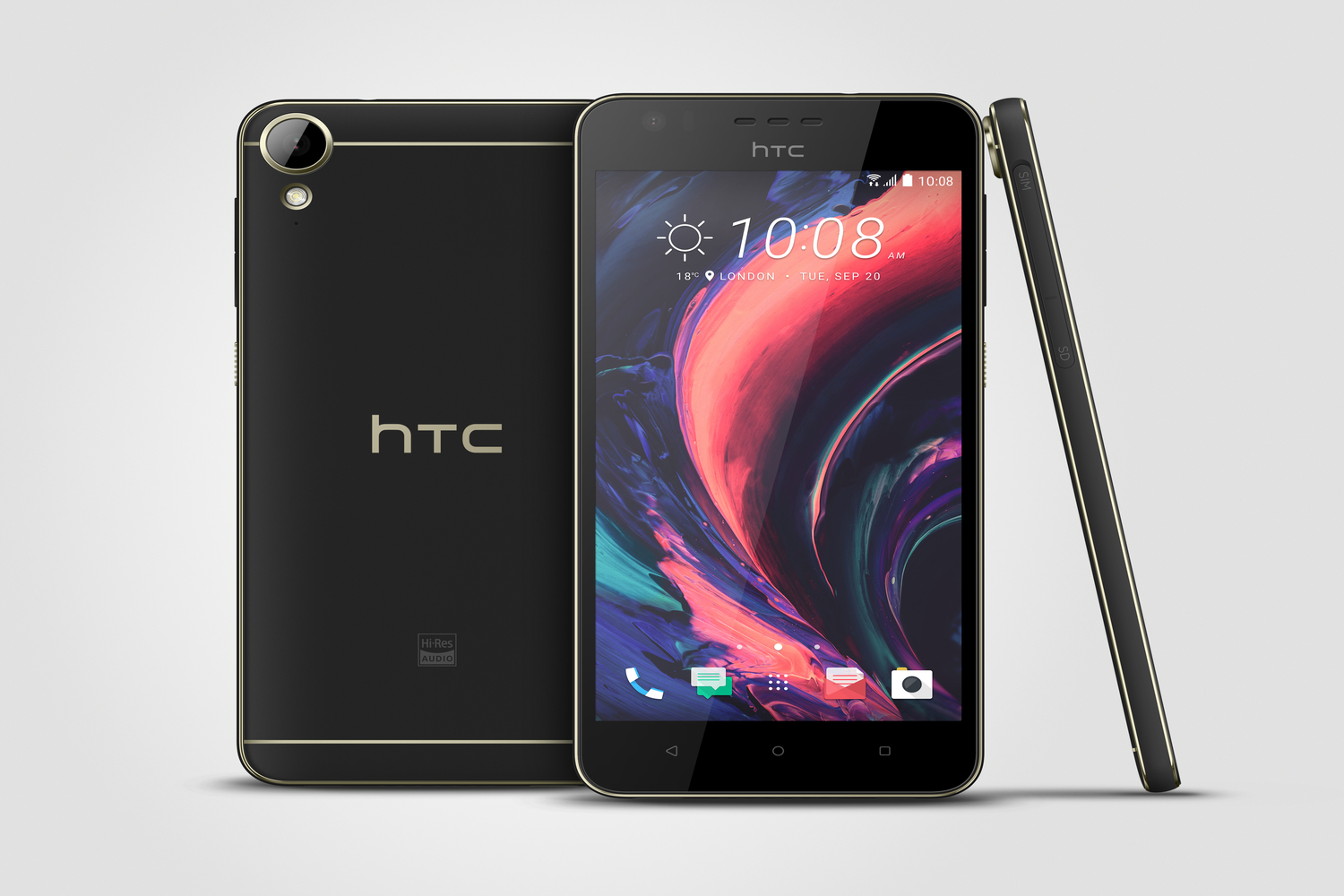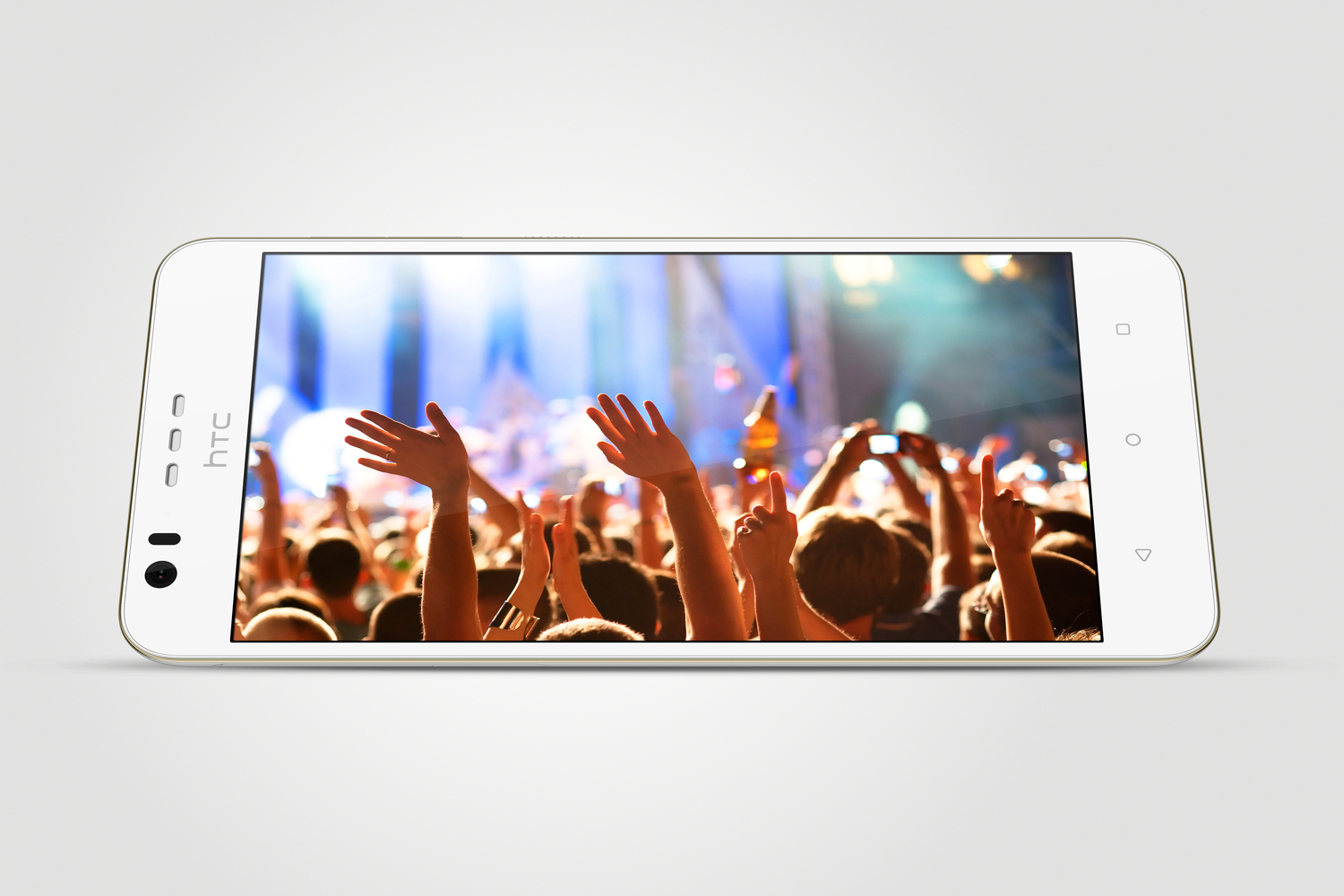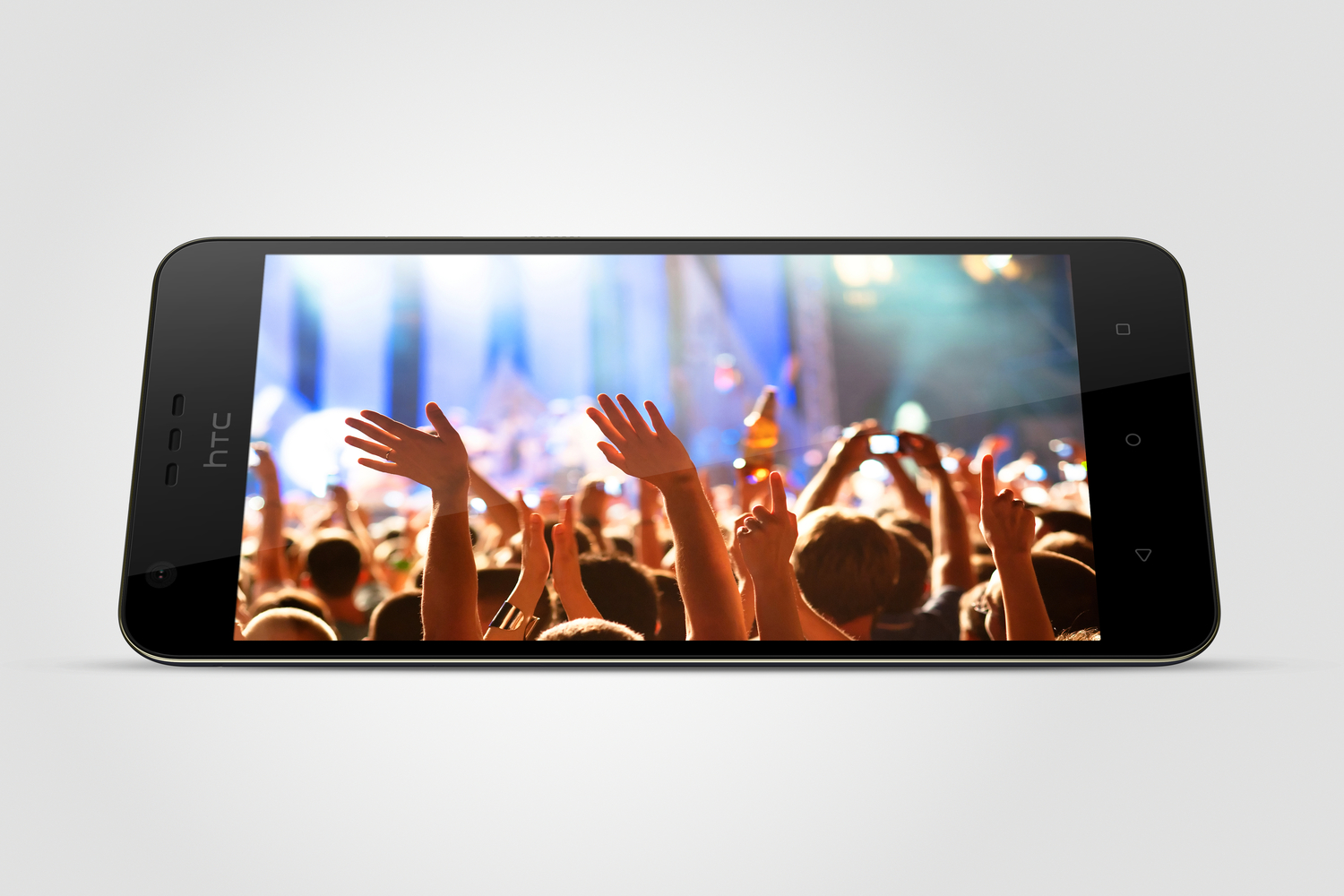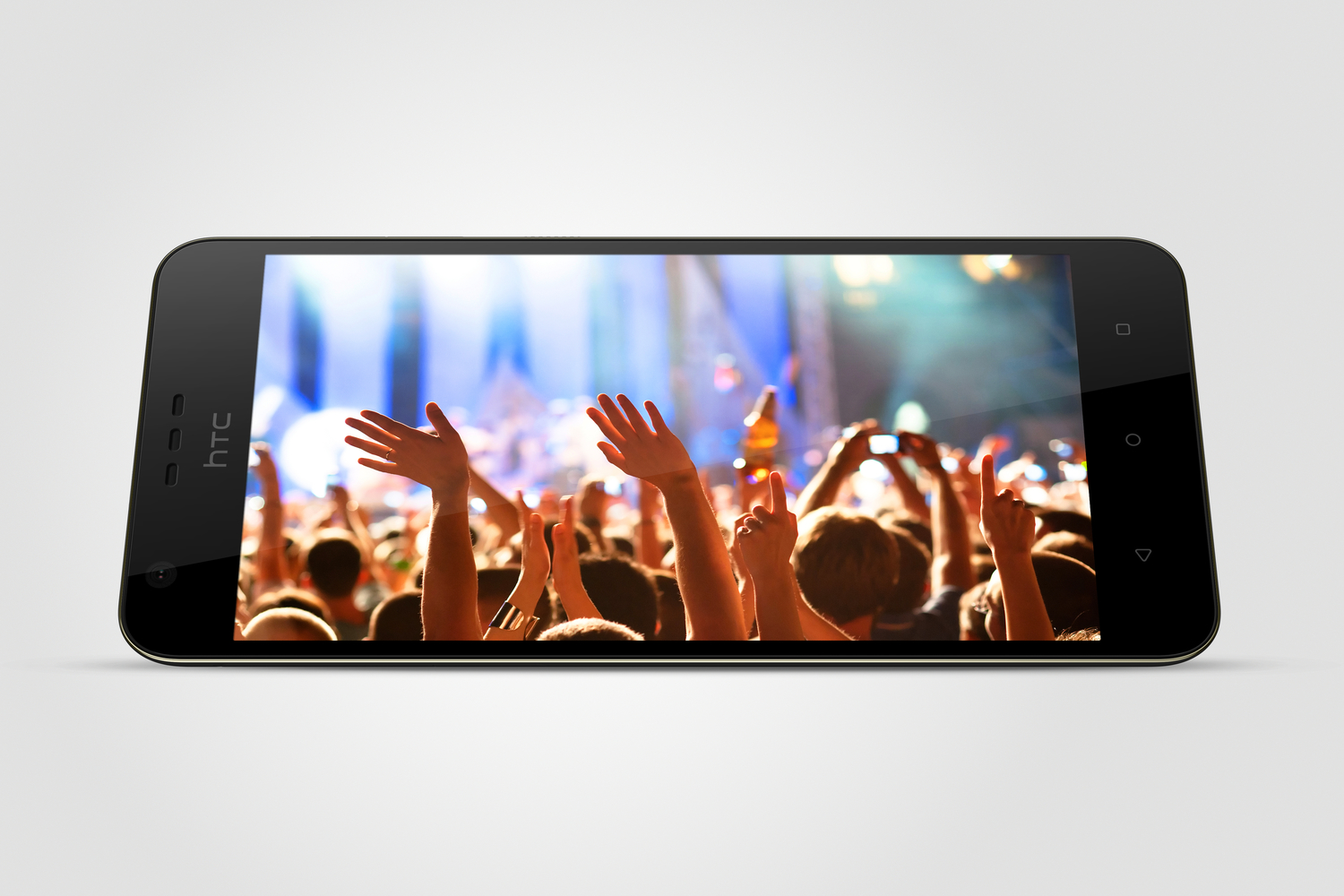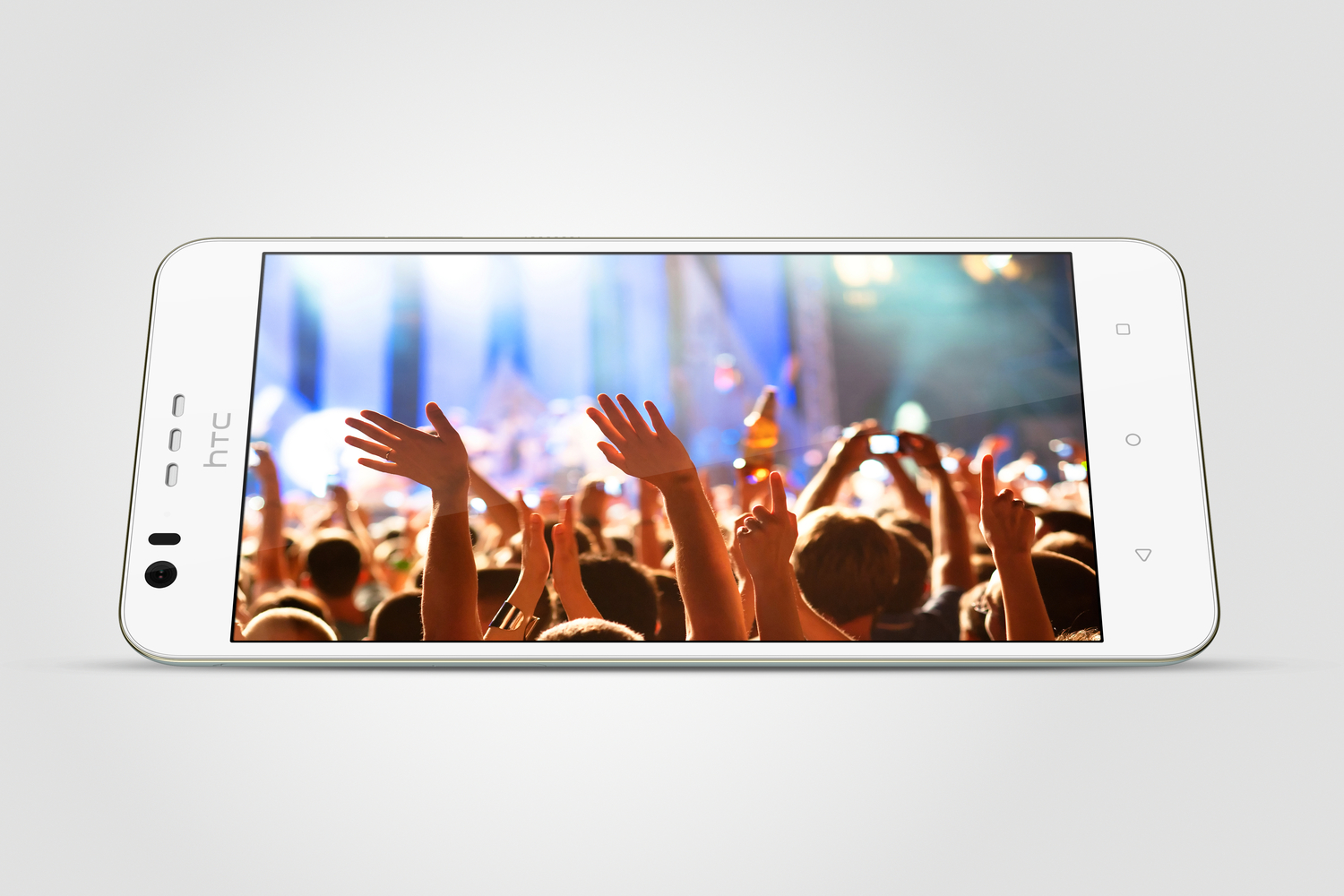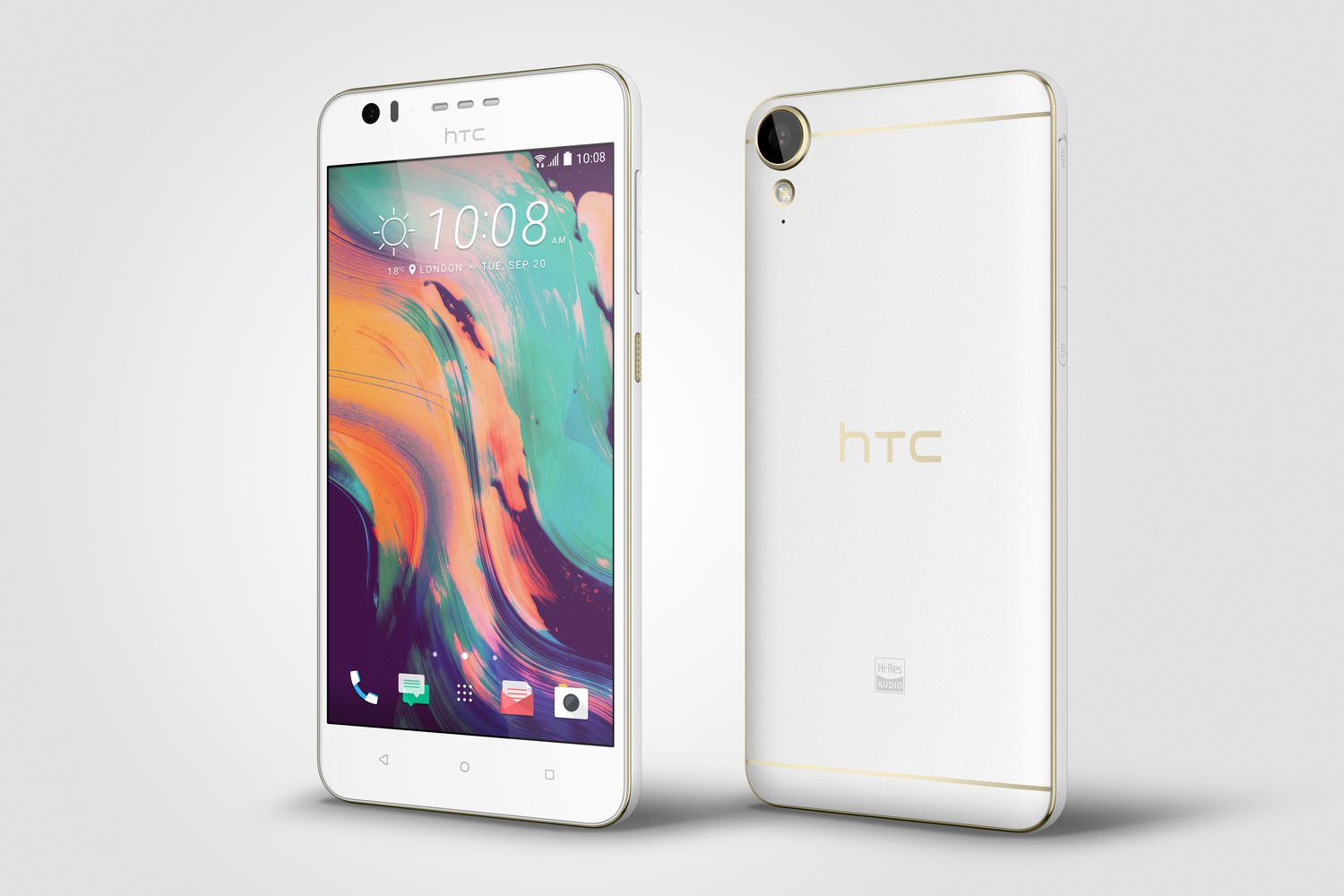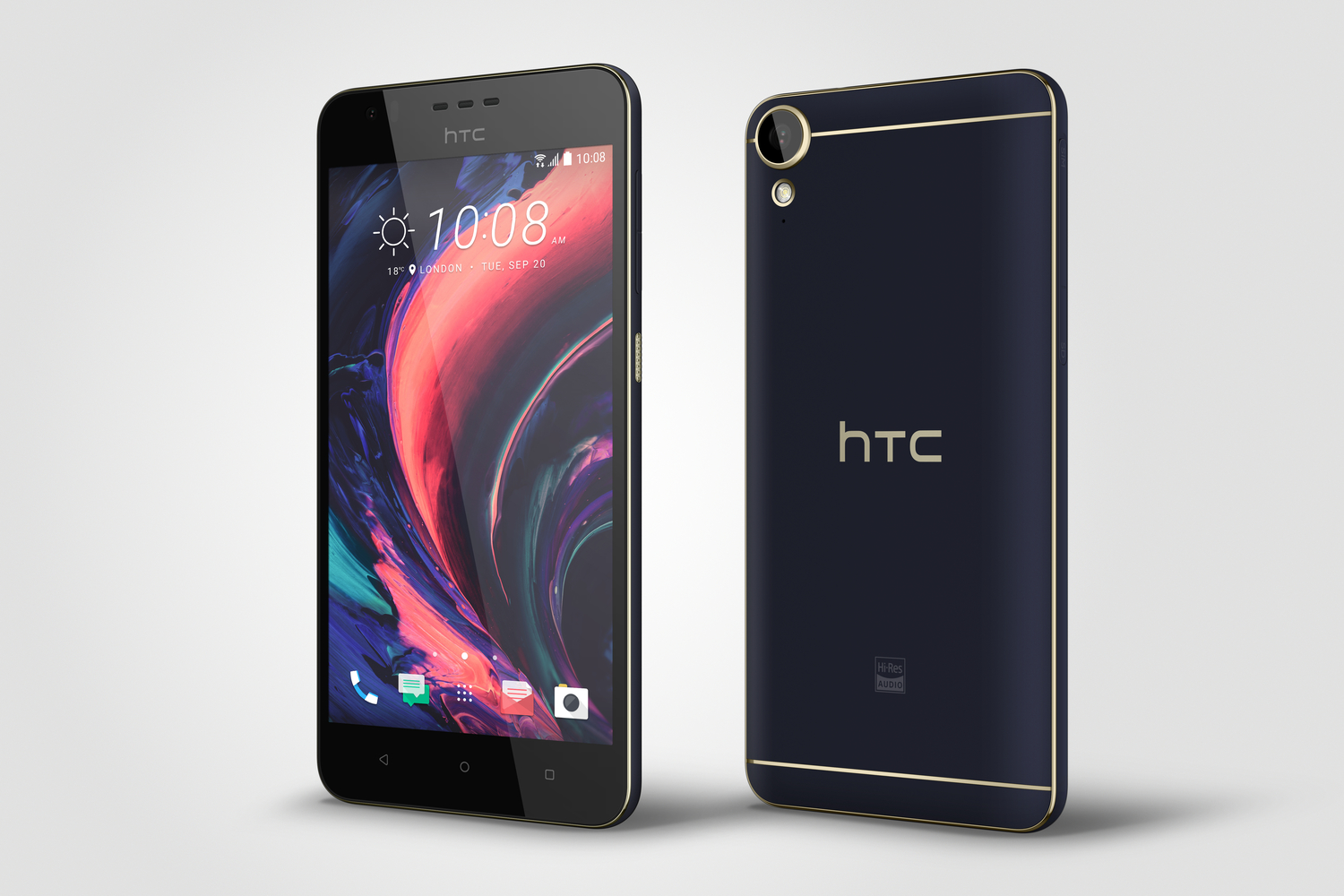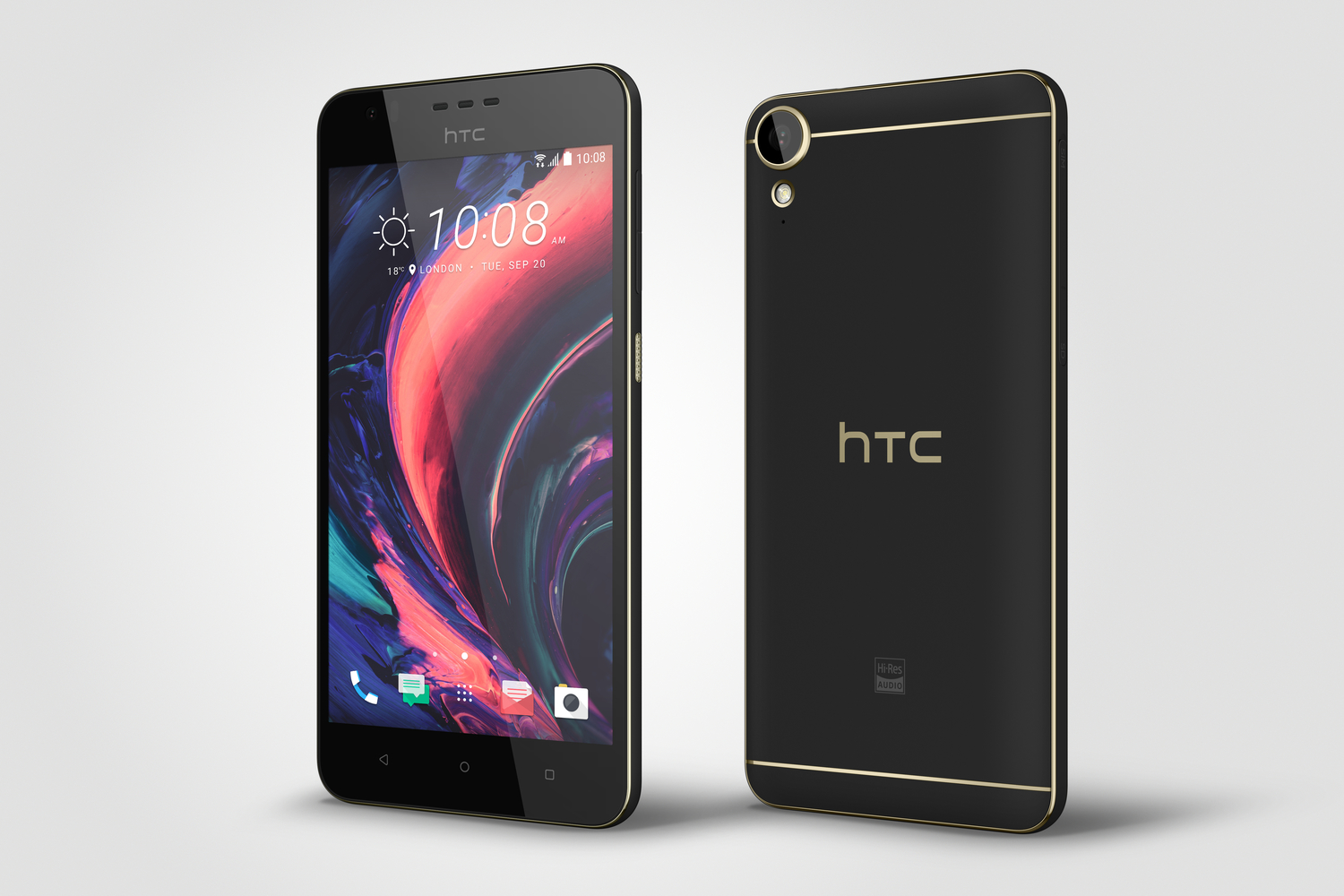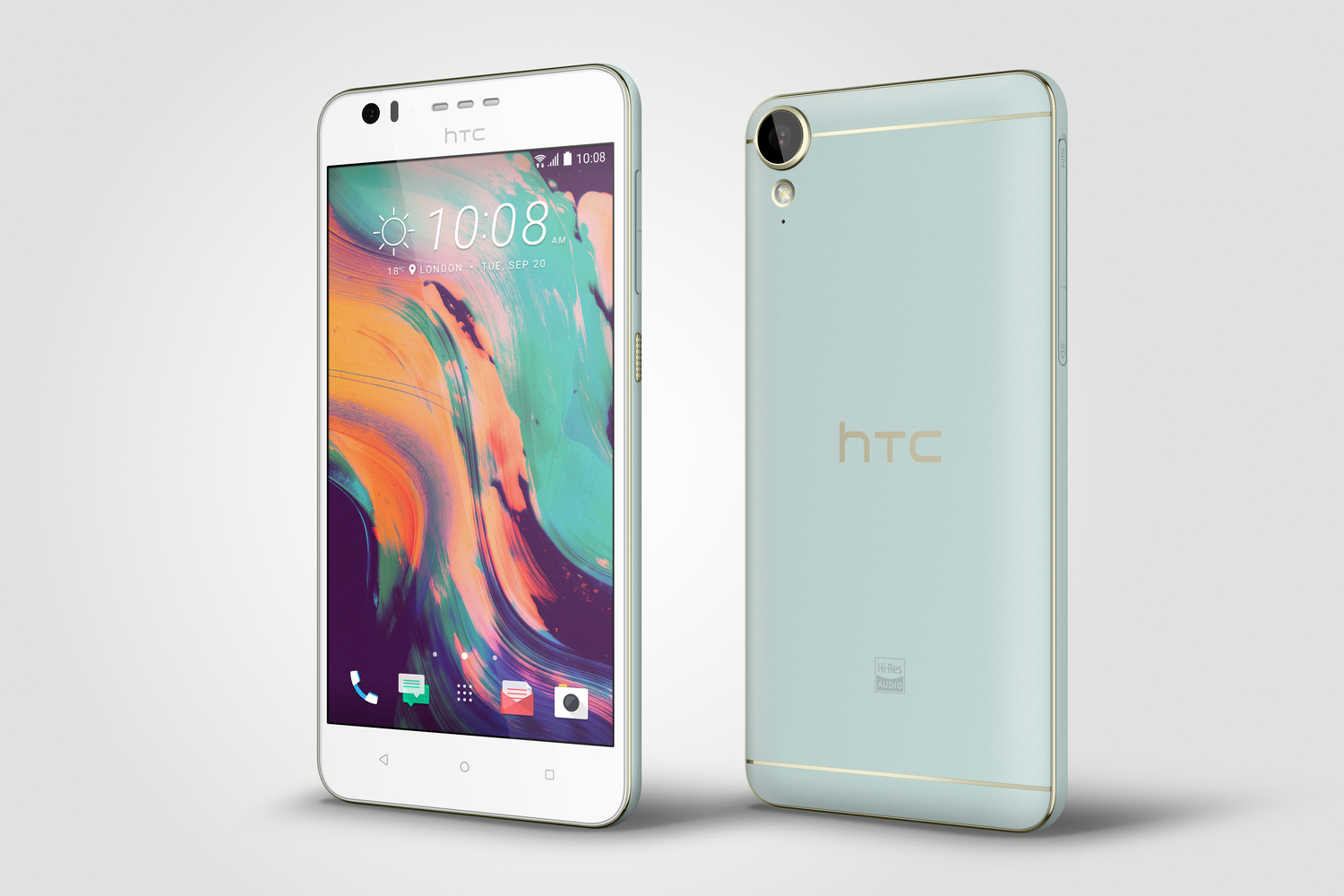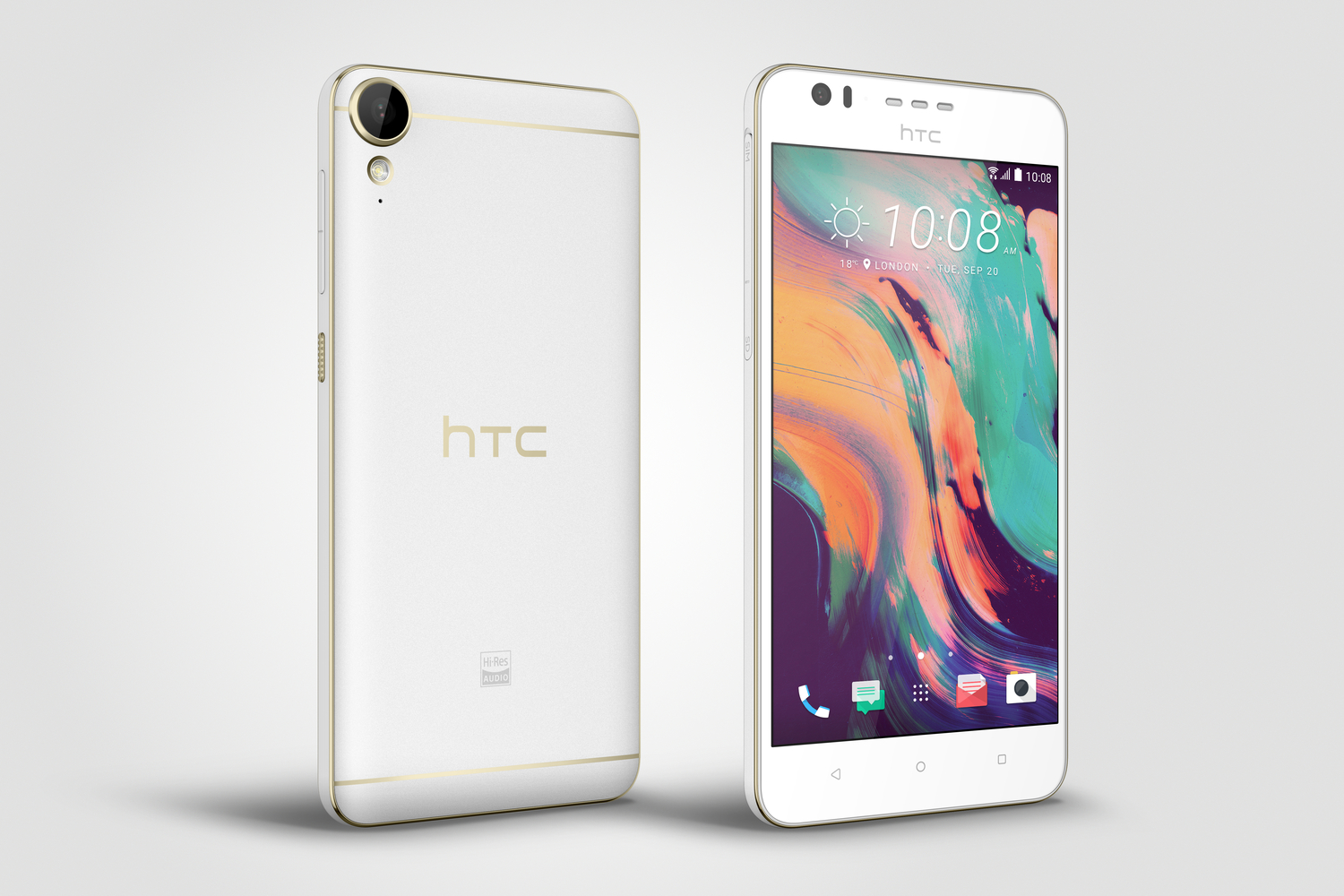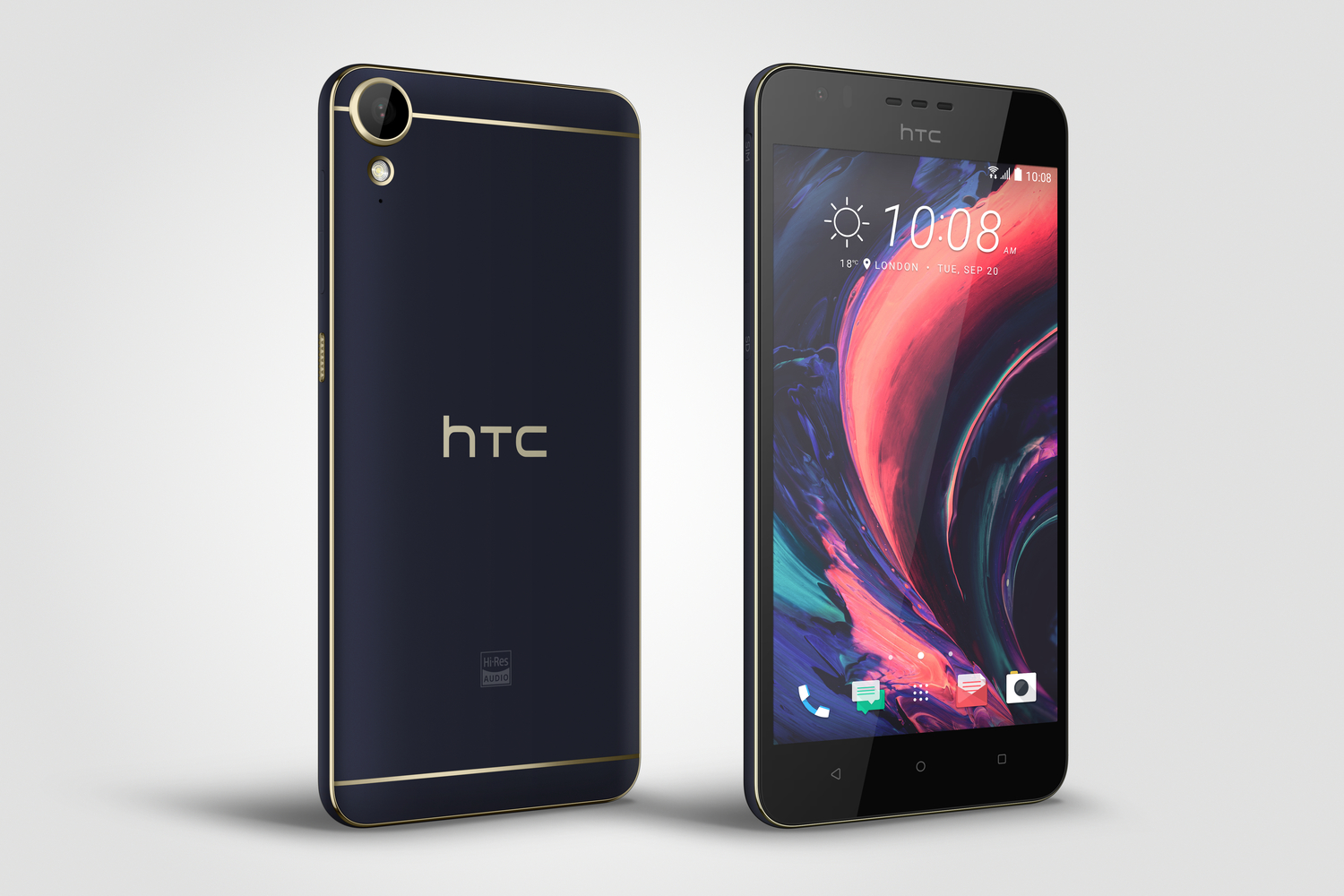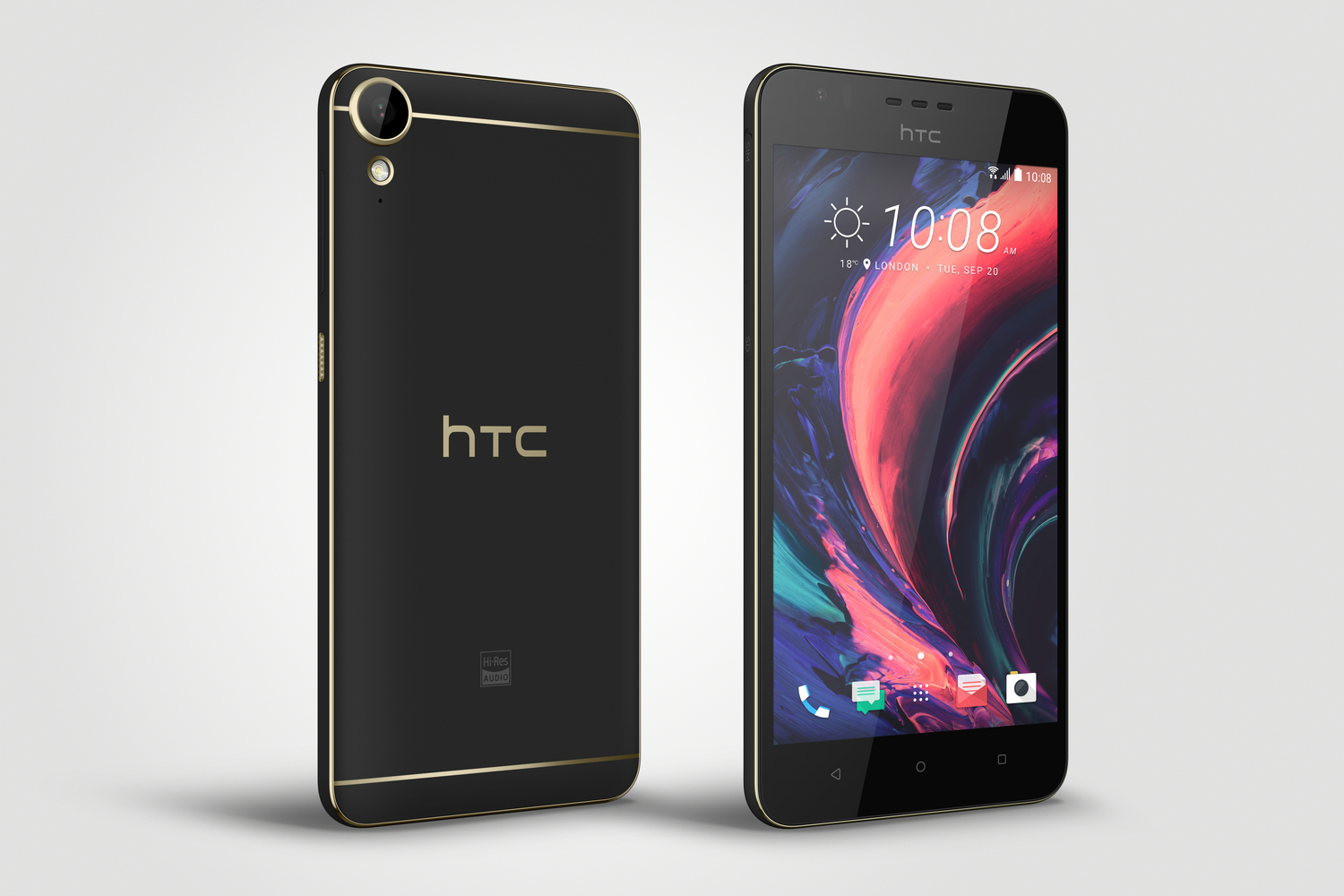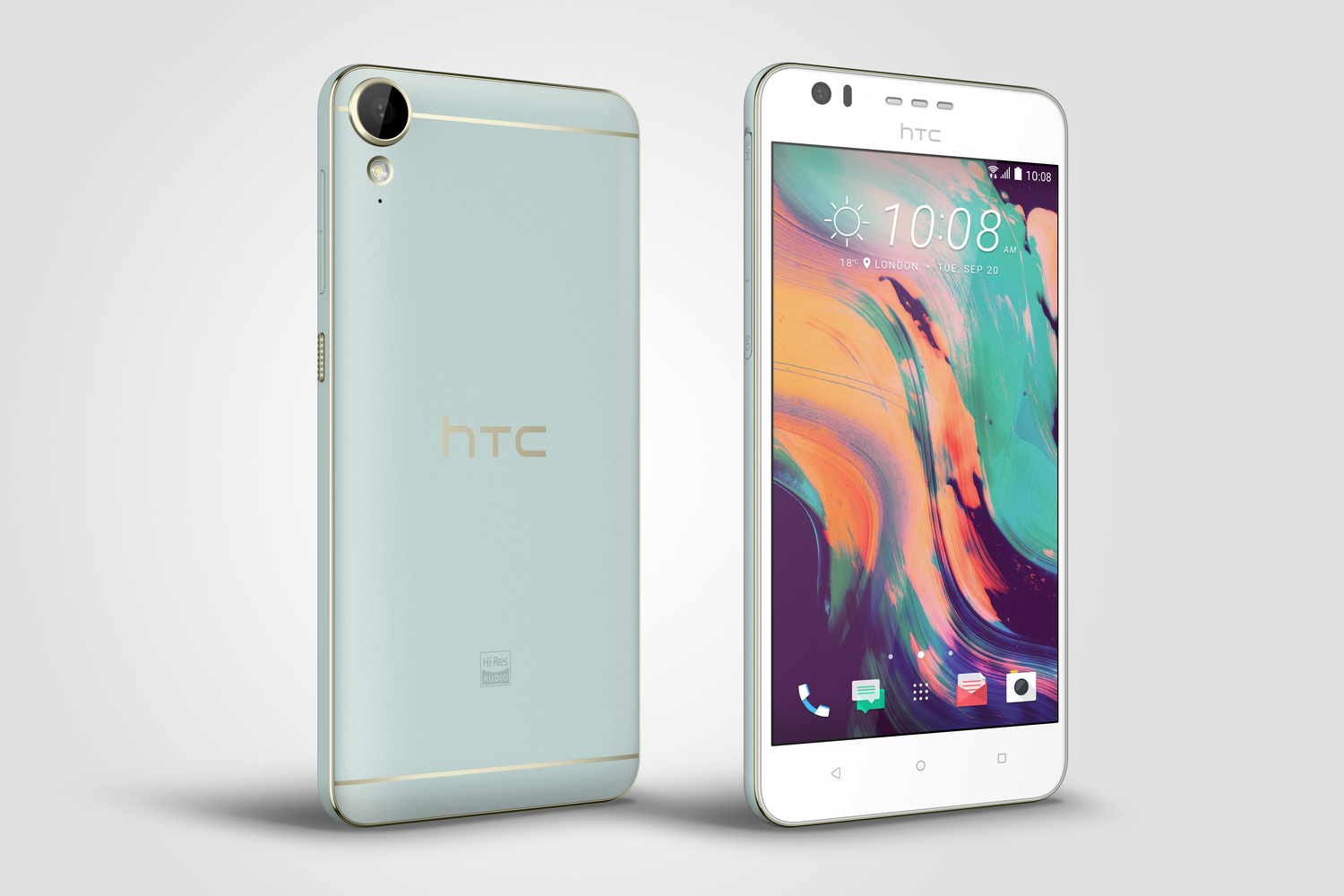Not every phone need achieve blockbuster status to be considered successful. There’s demand enough for phones at the margins, specifically for the sort of mid-range devices that don’t sport the hardware or command the prices of high-end handsets like the Apple’s iPhone, Samsung’s Galaxy S7, or LG’s V20 but nonetheless deliver good, if not great, user experiences.
According to market analysts at Gartner, they’re quite the crowdpleasers: 85 percent of users in Asian markets are replacing their middle-of-the-road phone with the same category of phone. Unsurprisingly, it’s a segment manufacturers are happy to supply. Taiwan-based smartphone manufacturer HTC is among them, and on Tuesday, it took the wraps off its latest efforts: Desire 10 Pro and Desire 10 Lifestyle.
Design is one of the pair’s headlining characteristics. The Desire 10 Pro and Desire 10 Lifestyle feature an understated matte black-and-gold aesthetic that HTC described as “inspired by the Art Deco movement”: a sloping, curving unibody with chamfered edges not dissimilar to HTC’s high-end HTC 10. It’s a familiar configuration of buttons and ports: on the bottom is a micro USB charging port and single loudspeaker, on the top is a microphone jack, on the left is a textured gold power button and bifurcated volume rocker, and around back is a single camera sensor with a flash and sensor module. It’s minimalism of the best kind.
That philosophy of simplicity extends to the Desire 10 series’ software. Both the Pro and Lifestyle ship with the latest version of HTC’s Sense, an overlay atop Android 6.0 Marshmallow. As such, they feature HTC’s Freestyle Layout, a digital grid that lets you place homescreen widgets, stickers, and doodads anywhere you please. And both pack HTC Themes, HTC’s theming engine, which provides options to “thousands” of icons, backgrounds, sounds, and more.
But while the Pro and Lifestyle share a body and software in common, it’s a different story under the hood. The Pro is the decidedly more premium of the two, sporting a 5.5-inch 1080p (1,920 x 1,080 pixels) IPS screen and an octa-core MediaTek Helio P10 processor paired with either 3GB or 4GB of RAM, depending on configuration. The rear-facing camera is a 20MP, f/2.2 model that that sports, in HTC’s language, “DSLR-like controls”: electronic image stabilization, high dynamic range (HDR), and laser autofocus. The 13MP on the Pro’s front isn’t quite as well-endowed, but packs a bright flash and a Selfie Panorama mode that lets you capture an ultra-wide, 150-degree photo “[big] enough to fit a whole football team with room to spare.”
Beyond the stellar pair of cameras, though, the Desire 10 Pro doesn’t pack much else in the way of surprises. It has a 3,000mAh battery that HTC that supports fast charging, plus a bass-boosting BoomSound audio profile for headphones and an “ultra-fast” fingerprint sensor that triggers selfies on demand. It has a fairly standard array of sensors including a ambient light sensor, proximity sensor, gyroscope, and compass. And its storage comes in the form of either 32GB or 64GB internal modules, both paired with a micro SD slot that recognizes cards up to 2TB in size.
The HTC 10 Lifestyle, meanwhile, compromises in some areas and excels in others. It trades the Pro’s 1080p screen for a 720p (1,280 x 720 pixels) model, and the octa-core processor for a quad-core Qualcomm Snapdragon 400. The RAM’s a bit of a downgrade, too, from the Pro’s 3GB/4GB to 2GB/3GB. The battery’s a tad smaller at 2,700mAh. And both cameras on the Lifestyle have been swapped for less capable sensors than those on the Pro: 13MP on the rear (down from 20MP), and 5MP f/2.8 on the front (from 13MP f/2.2).
But it’s not all bad. Audio’s a step up, for one: the Lifestyle sports the same BoomSound technology as that of the HTC 10 — 24-bit Hi-Fi audio with Dolby Audio certification and a noise-canceling dual microphone array. And most of the sensors on the Pro, including an ambient light sensor, proximity sensor, gyroscope sensor, and compass, are present and accounted for on the Lifestyle.
“HTC’s Desire line has always stood for fresh, youthful, and fashionable designs that are focused on delivering a great experience,” HTC President of Smartphones and Connected Devices Chialin Chang said in a statement. “Our Desire line is about to make its biggest leap since the original Desire. Inspired by many of the same innovations that have made the flagship HTC 10 so popular, we’re bringing these innovations to the Desire 10, making it the most brilliant Desire ever.”
That’s no exaggeration. Historically, the handsets that have graced HTC’s Desire lineup have been equal parts exceptional and mediocre. But the Desire 10 Pro and Lifestyle appear to be an exception to the rule, and if the prices are right, HTC may well have a pair of smash hits on its hands.
Both the Pro and Lifestyle will be available in black, white, blue, and “Valentine Lux” when they ship to European, Middle Eastern, and Asian markets later this year. Mum’s the word on U.S. availability, unfortunately.
